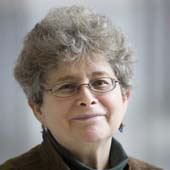What’s at Stake in Immigration Reform?
Why are care workers for the elderly, the disabled and children being given short shrift in the debate over U.S. immigration reform?
April 29, 2013

Migrants make up more than one quarter of the 3.2 million direct-care workers in the United States. They care for children, elders and people with disabilities or chronic diseases.
That is care that American citizens, mostly women, previously provided as part of their unpaid family responsibilities in the past.
Despite their essential contributions to the well being of millions of Americans, however, direct care workers from abroad (often migrant workers) are receiving little attention in current debates over immigration reform.
Nearly all of migrants employed in care work are female, and more than half are racial or ethnic minorities. They hail from countries such as Mexico, the Philippines, Guatemala, El Salvador and the Dominican Republic.
Many are undocumented, and their immigration status makes them vulnerable to poor working conditions—low wages, unpaid overtime, and often-disrespectful treatment by employers.
For the past several decades, the demand for paid care workers has been growing, as increasing numbers of American women enter the paid labor force.
At the same time, both the proportion of elders in the American population and their life expectancy are rising, driving the need for care workers.
This need will soon far outstrip the domestic supply of workers available for such jobs.
According to the Center for Global Development, nearly 1.7 million American workers aged 25-54 will enter the U.S. labor force as new workers in all fields by 2020—but nearly 1.9 million will be needed for care work alone.
Even if all U.S.-born labor market entrants chose to go into care giving (which is highly unlikely), there would still be a gap of at least 200,000 workers.
Who will make up the difference?
The logical answer is more migrants. But the immigration reform legislation currently being considered would not admit a sufficient number of “low-skilled” migrants (as care workers are categorized) to meet the projected demand.
The bill now under consideration would, in addition to putting some 11 million undocumented immigrants on the “path to citizenship,” allow “future flows” of temporary migrant workers to be calibrated according to the country’s economic needs.
Starting in 2015, 20,000 “W-visas” would be offered annually to low-skilled guest workers, with the possibility of increasing that number over the next five years to 75,000 and eventually to a ceiling of 200,000.
Under current immigration law, the number of temporary visas for low-skilled non-agricultural workers (so-called H-2B visas) is capped at 66,000 annually. The proposed bill would not bring the supply of W-visas to that level until 2018.
Moreover, there is no guarantee that all W-visas would go to care workers. According to an agreement reached in late March by the AFL-CIO and the Chamber of Commerce, 15,000 would be reserved annually for construction workers.
This means that migrants seeking jobs as direct care workers would have to compete with all the other low-skilled workers for the remaining slots. In a year when the total limit for visas is set at 20,000, only 5,000 would be available for non-construction workers.
As Tamar Jacoby of Immigration Works USA put it, referring to the quotas for low-skilled workers in general, “The program is puny — less than half the size it needs to be, perhaps less than a third…”
As long as demand remains strong and opportunities for well-paid employment remain scarce in migrant care workers’ countries of origin, undocumented entry into the U.S. is likely to continue.
(Indeed, observers believe, many of the 11 million unauthorized migrants currently in the country have come to do this kind of work.)
Though falling short in terms of numbers, the proposed legislation does offer some improvements over the existing policy—improvements that would benefit not only care workers but also those they care for.
Unlike previous temporary work visas, which were designed for seasonal work, W-visas could last for up to three years and be renewed indefinitely. These make more sense for care work, a field in which positions can vary in terms of length.
Some may be brief — caring for someone at the end of life — while others might involve caring for young children or persons with disabilities or chronic illness over a longer period of times.
Moreover, according to the Migration Policy Institute, longer-term temporary visas will encourage employers and workers to invest in workforce development.
W-visas would also give migrants the advantage of portability: after an initial period of work for a sponsoring employer, dissatisfied visa-holders would have a “reasonable period of time” to seek another job.
This would be especially useful for careworkers, who often “live-in” at their places of employment. If their situations are uncomfortable or even exploitative (as is sometimes the case), they would have the option to change.
In addition, W-visa holders may be accompanied by spouses and dependents.
Spouses would be eligible for work authorization, and parents would have the option of bringing in children who must now be left behind in the care of other family members or paid workers.
W-visa holders would not, however, be eligible for Medicaid, Food Stamps, Obama-care, or any of the other social benefits available to U.S. citizens.
After three years, W-visa holders would have the option of “getting on the path to citizenship.”
At this point, they would face the same high costs as other applicants, including, in addition to the usual application fees, fines and payment of back taxes, which could run into tens of thousands of dollars.
This might put citizenship beyond the reach of low-skilled employees, particularly female direct-care workers, who earn well below the median — $308 per week, compared to $560 for all female workers.
Clearly, much is at stake for direct-care workers in immigration reform, but perhaps even more is at stake for American society. As UC Santa Barbara historian Eileen Boris points out, the labor of paid care workers “is what that makes the labor of us all possible.”
If future flows of migrant care workers are insufficient, U.S. workers, especially women, will be pressured to leave their own paid jobs to meet the need, and the economy, as well as their careers, will suffer.
Takeaways
The proportion of older people in America and their life expectancy are rising, driving the need for elder care.
The labor of paid care workers makes everyone else's labor possible.
Nearly all of these workers are female, more than half are racial or ethnic minorities — and many are undocumented.
Migrants make up more than one quarter of the 3.2 million direct care workers in the United States.
Read previous

Do We Need New Global Institutions?
April 28, 2013
